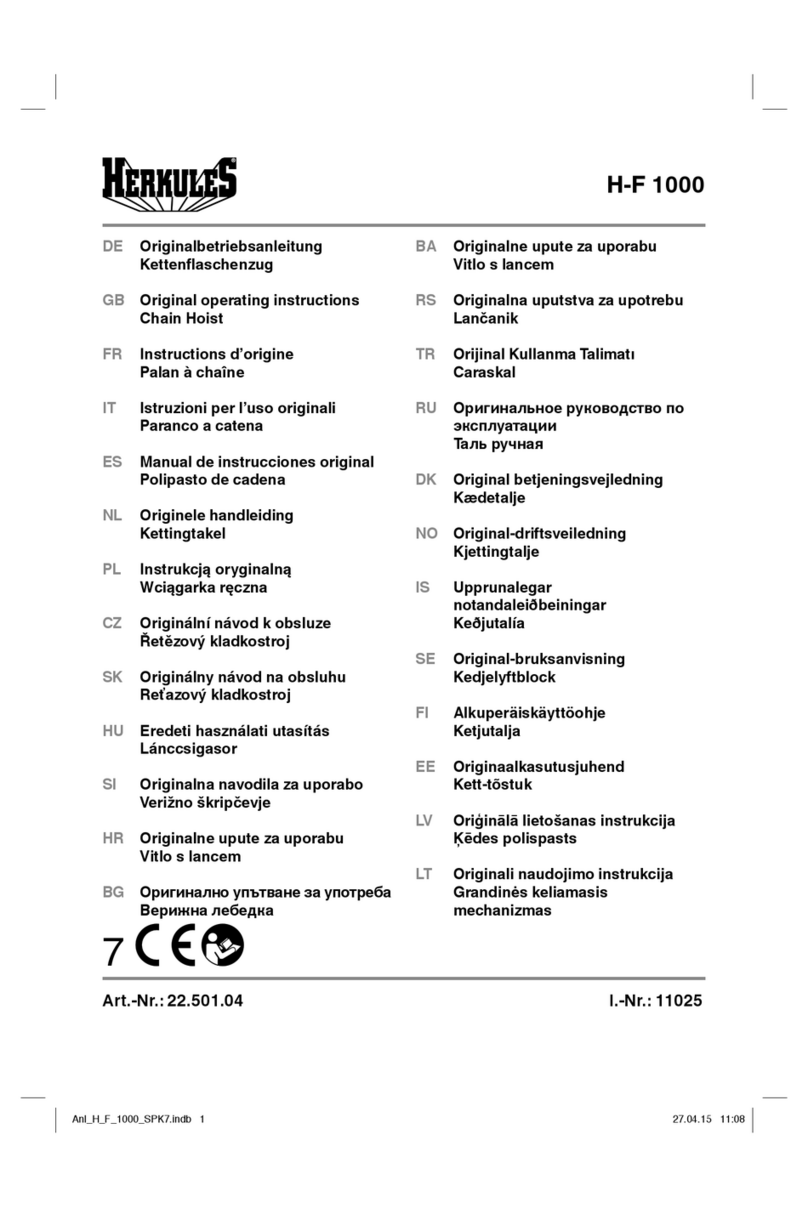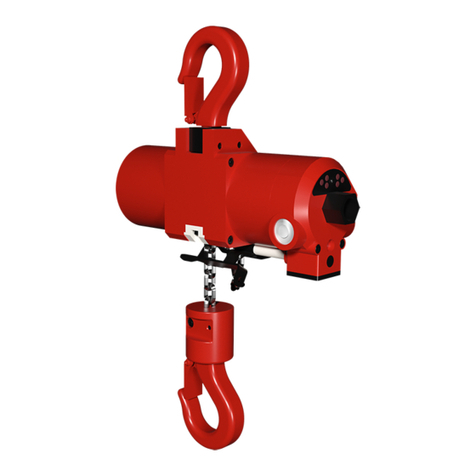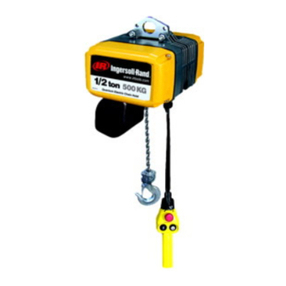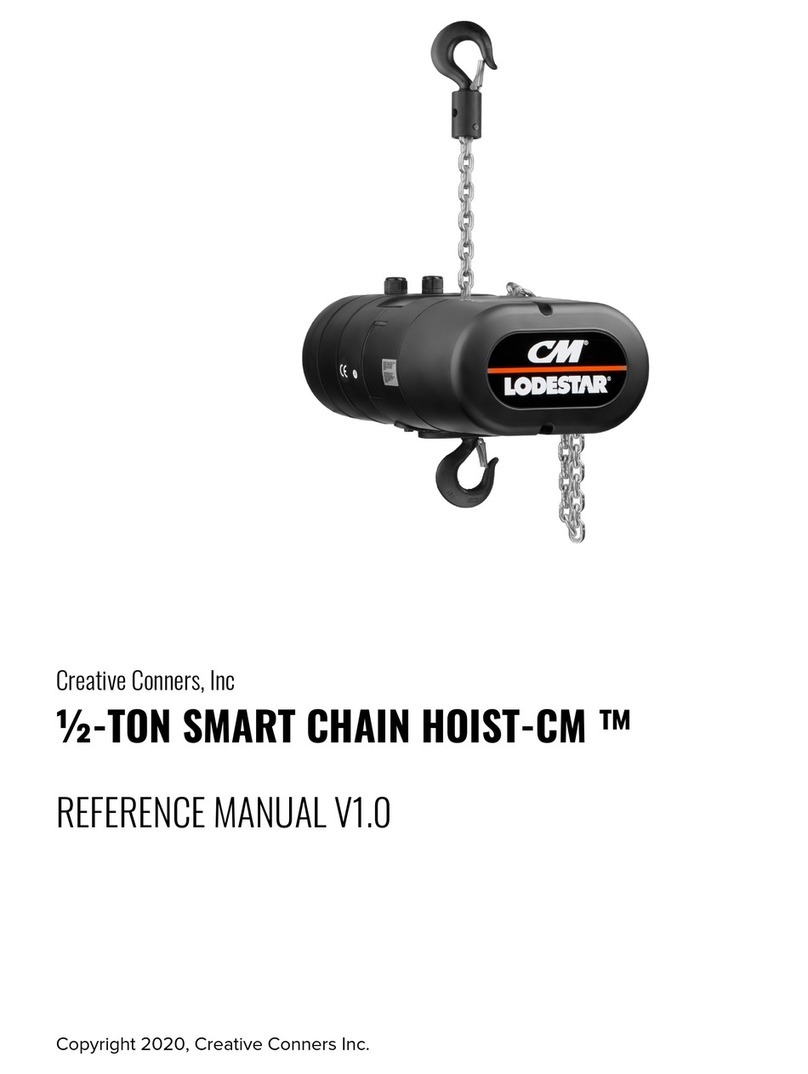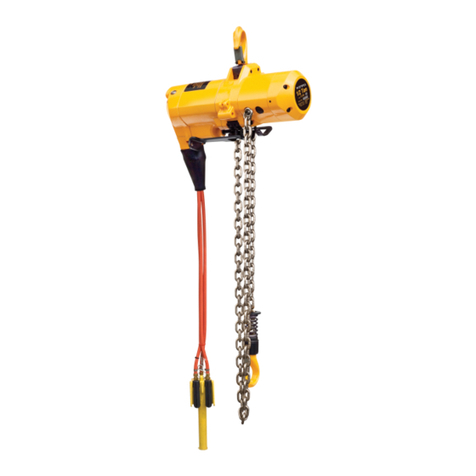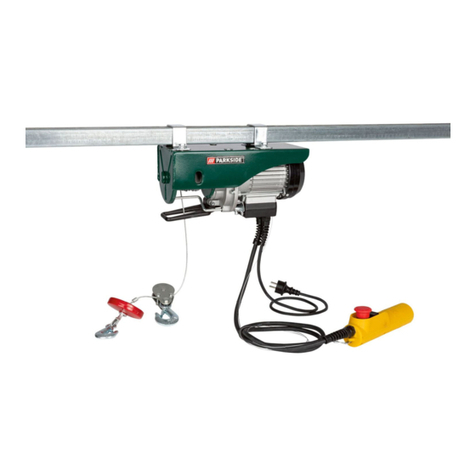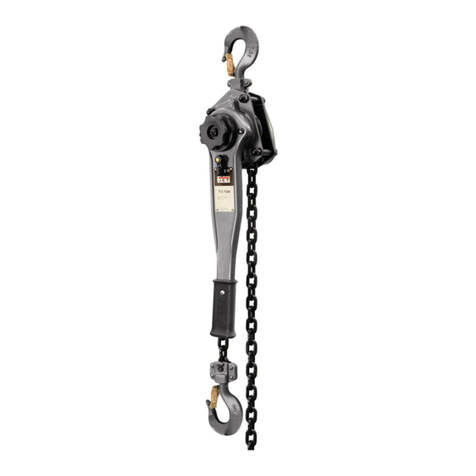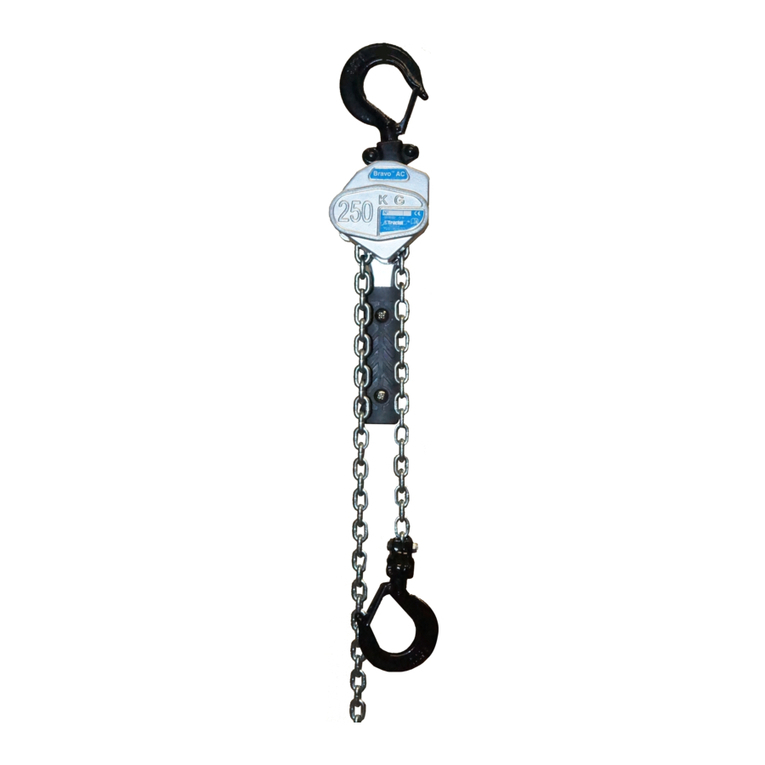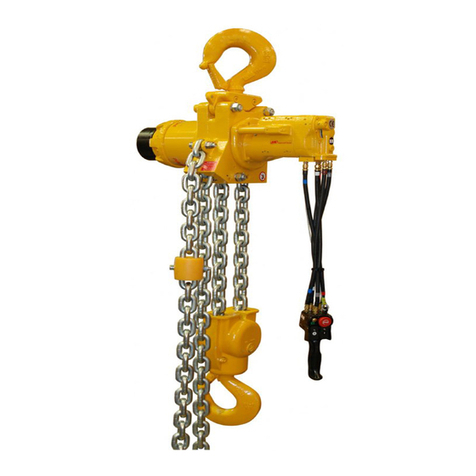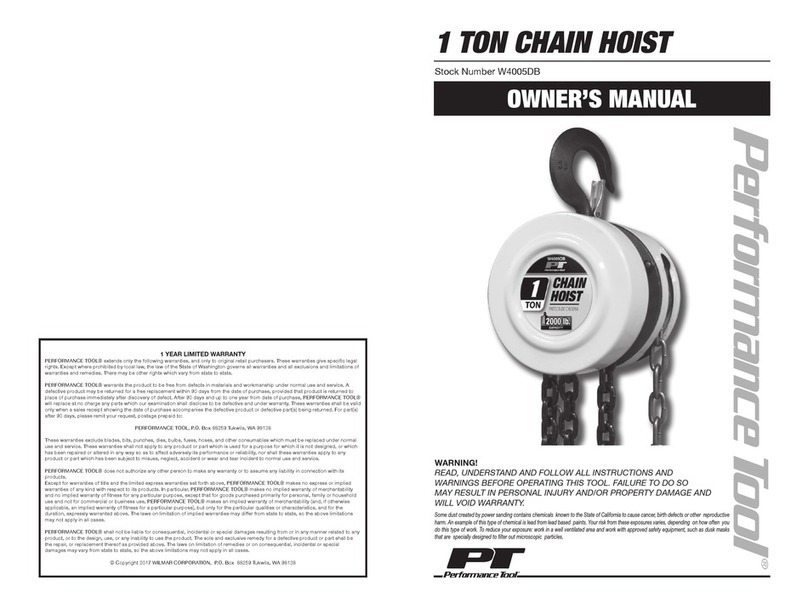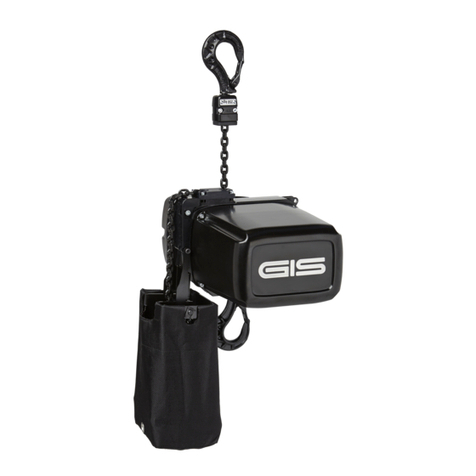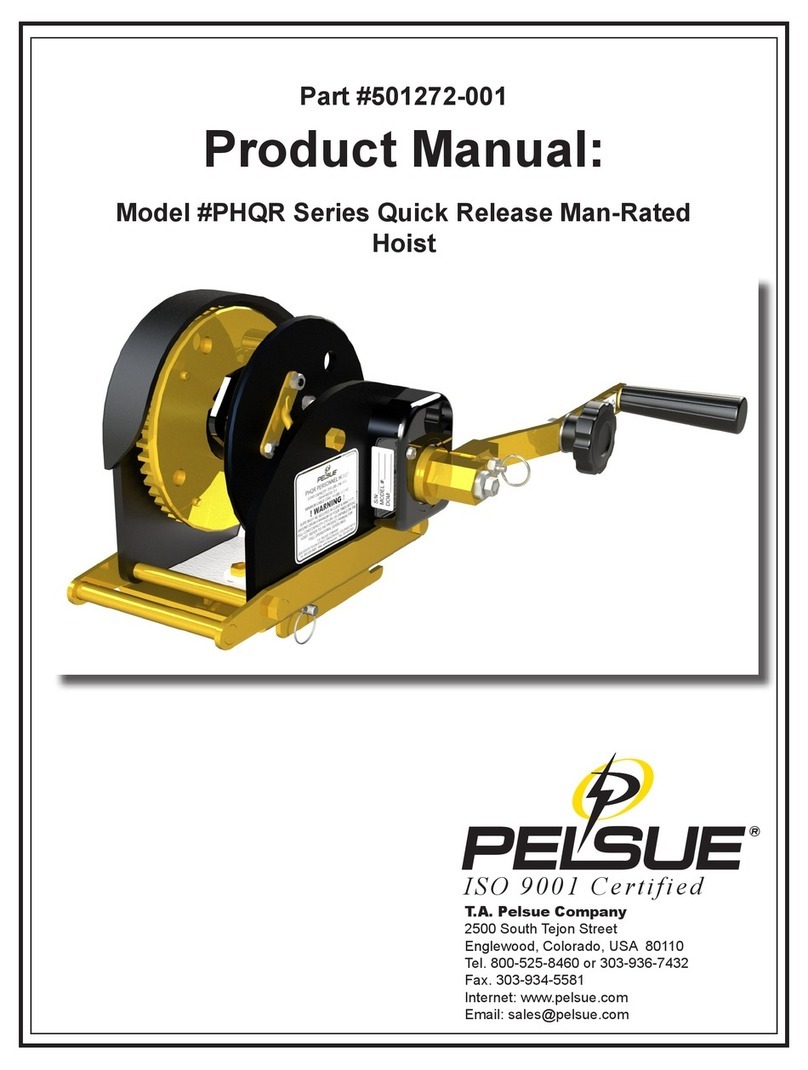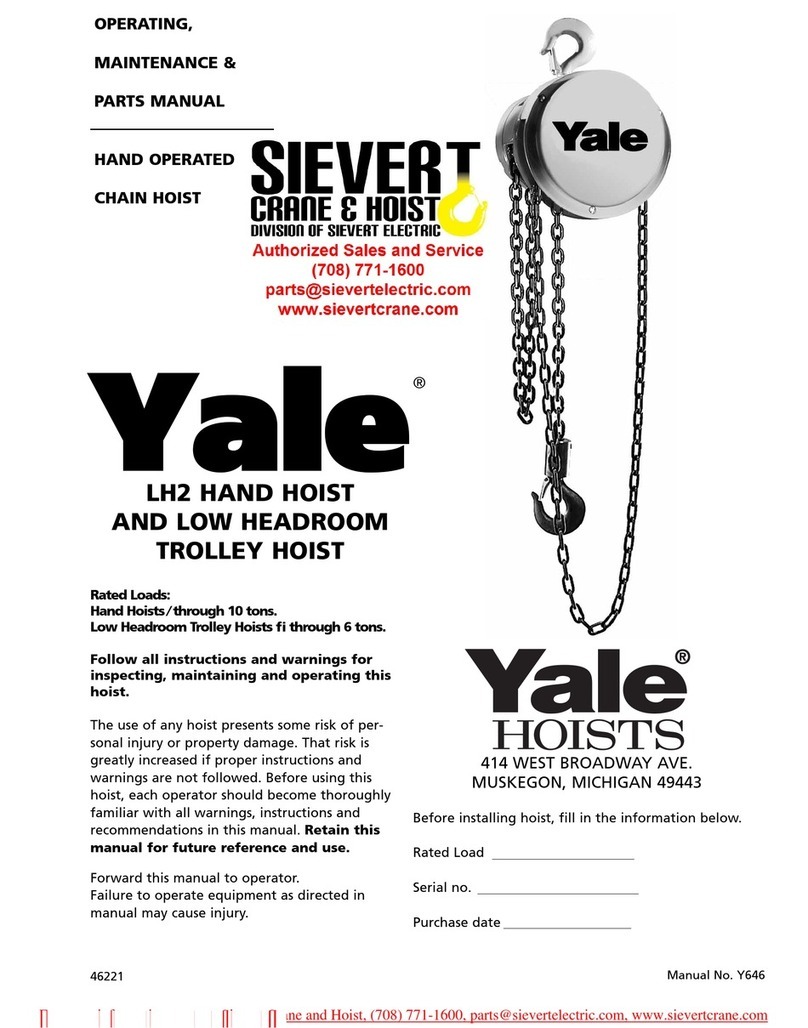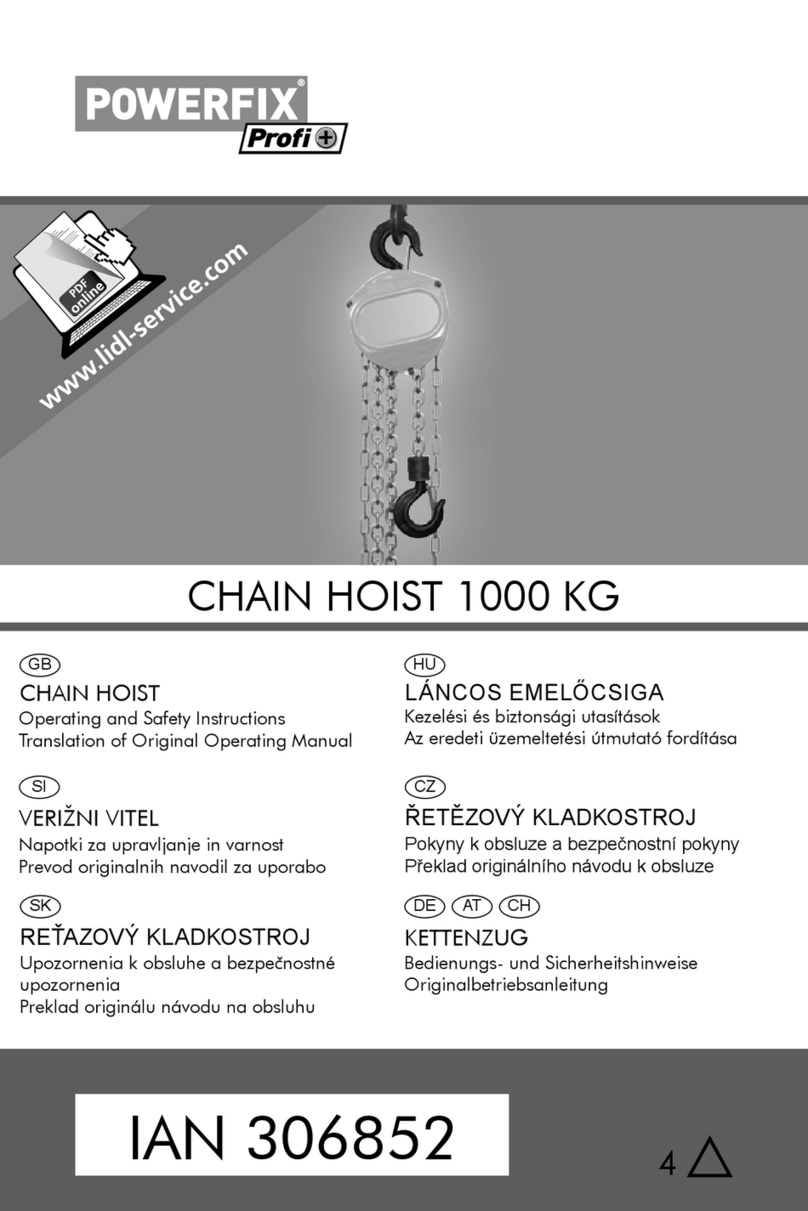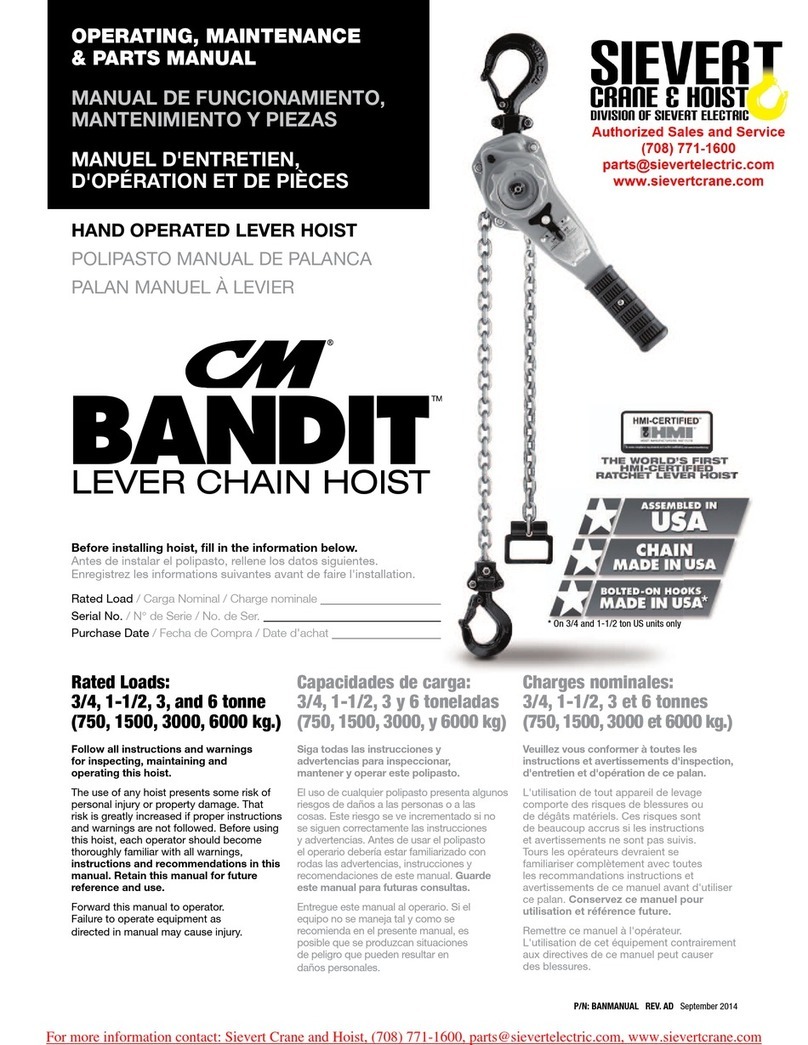
Page 4
2-1 Safety regulations
2-1-1 General safety rules
1. This electric hoist is designed for lifting products only. Do not apply the electric
hoist for lifting person.
2. The electric hoist should be mounted on a flat solid place.
3. Installing the electric hoist at a proper levelling condition to ensure the chain
arranged neatly. This may avoid chain friction against the hoist body.
4. Make sure your power source comply with the voltage indicated on the electric hoist
before connecting the power wires to the power source.
5. Connect the power wires. Tighten the terminals securely.
6. Make sure the electric hoist has been properly grounded. The power circuit should
be equipped with an electric shock breaker.
7. Before operating the electric hoist, read and follow the instructions for allowable
lifting weight, speed and voltage etc. Indicated on the attached plate.
8. Do not exceed the rated lifting capacity of the electric hoist. Allowable lifting weight
is indicated on the attached plate.
9. The electric hoist should be operated by a skilled operator. Before operating the
electric hoist check again if all lock screws are tightened securely without
loosening.
10. Before operating the electric hoist check to see if the chain runs to the correct
direction and the brake works normally.
11. Do not allow any person approaches under the electric hoist, bracket or weight.
12. Select a proper location for mounting the electric hoist, to prevent the lifting weight
bumping against any construction, steel frame or construction beam etc while
lifting.
13. Always keep the chain in a good condition.
14. Lift weight vertically. Do not lift weight in a slant or horizontal direction. Do not have
weight hooked on the chain for a long time.
15. Do not use the electric hoist to pull out any object fixed in the floor or any
construction.
16. When the electric hoist is running, keep your hands or any object away from it to
avoid danger.
17. Prevent control wire or power wire from hooking or contacting by the chain. This
may avoid electric shock or any danger.
18. In case any malfunction or abnormal noise occurs during operation, stop the electric
hoist immediately. Check and repair it immediately for safety.
19. Do not alter the electric circuit or use any other replacement parts not supplied from
the original manufacturer.. This avoids affection on the hoist performance or any
accident.
20. The operator is requested to fully obey the safety rules listed for safety protection.

